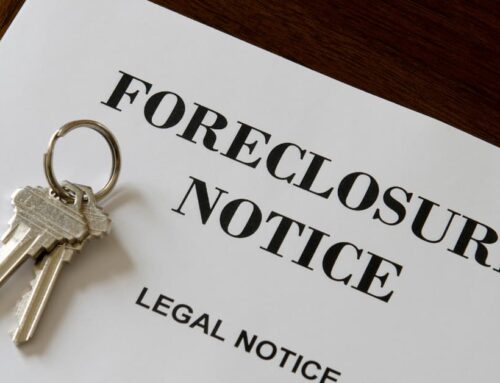An easement appurtenant is a legal right that allows one property owner to use a portion of a neighboring property for a specific purpose, such as access to a driveway or utility line. Unlike temporary agreements, this type of easement is permanently tied to the land and transfers with property ownership.
These easements can significantly impact property rights, access, development potential, and resale value. Whether you are dealing with a property that benefits from an easement or one that is burdened by it, understanding your legal position is critical.
Working with an experienced real estate attorney can help you navigate these legal complexities, avoid disputes, and protect your property interests.
This blog will explain everything you need to know about appurtenant easements, including how they are created, how they differ from other easement types, common legal challenges, and what steps to take if a dispute arises. If you are a property owner, buyer, or developer, reading this guide will give you the insight and tools needed to make confident and informed decisions.
Key Takeaways:
- Property Impact: Appurtenant easements affect both current and future property owners, running with the land perpetually.
- Legal Rights: Understanding your rights and responsibilities regarding easements prevents costly disputes.
- Professional Guidance: Expert legal counsel ensures proper easement creation, modification, and dispute resolution.
- Property Value: Easements can significantly impact property values and future development potential.
- Legal Protection: Working with experienced attorneys safeguards your property rights and interests.
Easement Appurtenant Definition
An appurtenant easement is a property right that connects two parcels of land. One is known as the dominant estate, which benefits from the easement, and the other is the servient estate, which carries the burden. This type of easement is not a personal agreement but a permanent legal arrangement that remains in place even when either property changes ownership.
For example, a property may require a driveway that crosses a neighbor’s land to reach the nearest public road. In this case, the easement allows the necessary access and continues to apply to future owners of both properties. This is because appurtenant easements are tied to the land itself, not to the individual owner.
These easements can directly affect how property is used, developed, or sold. They often increase value by guaranteeing access but can also impose limitations on the servient estate. Disputes may arise when the terms are unclear, overused, or not properly documented.
Understanding how appurtenant easements function is an important part of protecting your property rights. The following sections will explain how these easements differ from others, outline common legal challenges, and provide steps you can take to resolve or prevent conflicts effectively.
Easement Appurtenant vs Easement in Gross
While both appurtenant easements and easements in gross grant legal rights to use another person’s property, they differ in several important ways.
An easement appurtenant is tied to the land itself. It benefits a specific parcel of property (the dominant estate) and remains in place even when the property changes ownership. The easement transfers automatically with the deed, making it a permanent feature of both the dominant and servient estates.
In contrast, an easement in gross benefits an individual or an organization rather than a piece of land. These easements are typically not transferable unless stated otherwise and often expire when the beneficiary no longer needs the access. Easements in gross are common for utility companies, allowing access to run power lines, pipelines, or cables across private land.
Here’s a quick comparison:
Appurtenant easement: Benefits property, transfers with the land, typically permanent
Easement in gross: Benefits a person or entity, does not transfer automatically, often limited in duration
Understanding this distinction is essential for property owners, especially during sales, development planning, or resolving access disputes. Appurtenant easements can directly affect property value and future use, while easements in gross are more situational and typically governed by separate agreements.
Distinguishing Appurtenant Easements from Other Easement Types
Understanding how appurtenant easements differ from other easement types is crucial for property owners. Unlike easements in gross, which benefit specific individuals or companies rather than properties, appurtenant easements transfer automatically with property ownership.
They also differ from prescriptive easements, which arise from continuous use over time without explicit permission, and from negative easements, which restrict property use rather than grant access rights.
The table below outlines key differences between common types of easements:
| Type of Easement | Beneficiary | Transferability | Creation Method | Duration |
|---|---|---|---|---|
| Appurtenant | Specific property (dominant estate) | Transfers with property ownership | Express grant, necessity, or implication | Permanent unless terminated |
| In Gross | Individual or entity | Usually non-transferable | Express agreement | Limited to beneficiary's needs |
| Prescriptive | Property or individual | Varies by circumstance | Continuous use over a statutory period | Permanent once established |
| Negative | Adjacent property owners | Transfers with property | Express agreement or covenant | Varies by agreement |
Each type serves different purposes in property law, but appurtenant easements are particularly valuable for ensuring lasting property rights that benefit specific parcels of land rather than individual owners.
Impact of Easement Appurtenant on Property Rights
Easement appurtenant significantly affect both the dominant and servient estates. For the dominant estate owner, the easement provides necessary access or utility rights.
The servient estate owner must respect these rights while maintaining certain control over their property. This relationship requires careful balance and clear understanding of respective rights and obligations.
Property values can be affected by appurtenant easements, either positively through guaranteed access rights or negatively through use restrictions. Understanding these implications is crucial when purchasing or selling property with existing easements.
Legal Rights and Responsibilities in Appurtenant Easement Relationships
Both dominant and servient estate owners have specific rights and responsibilities regarding appurtenant easements. Understanding these rights and obligations is crucial for maintaining harmonious property relationships and avoiding legal disputes.
Rights of the Dominant Estate Owner
The dominant estate owner (easement holder) has the right to use and access the easement for its intended purpose, including performing necessary maintenance. However, they must confine use to the specified purpose and avoid unreasonably burdening the servient estate.
Rights of the Servient Estate Owner
The servient estate owner retains the right to use their property in ways that don’t interfere with the easement, including development and modification that doesn’t impair easement use.
They may also grant additional non-conflicting easements and, in some cases, relocate the existing easement with proper approval.
Shared Maintenance and Communication
Both parties share responsibility for maintenance costs (unless otherwise agreed), clear communication about modifications, and avoiding actions that could damage the property or easement area.
Kelly Legal Group helps property owners understand their rights and enforce these rights while ensuring compliance with Texas property law through carefully drafted easement agreements.
Common Appurtenant Easement Disputes
Legal challenges often arise when property owners misunderstand or misuse their easement rights. Common disputes include:
Obstruction Issues
When servient estate owners block or restrict access, they may face legal consequences. Common obstructions include unauthorized fences, locked gates, or parked vehicles blocking accessways.
Kelly Legal Group can help resolve such conflicts through negotiation or litigation when necessary.
Overuse and Modification
Attempts to expand easement use beyond its intended scope can lead to serious legal disputes. This might include widening driveways without permission or increasing traffic beyond reasonable levels. Our attorneys help clients understand and enforce appropriate easement limitations.
Maintenance Conflicts
Disagreements frequently arise over maintenance responsibilities and cost-sharing arrangements. Whether it’s road repairs, drainage maintenance, or general upkeep, clear agreements are essential.
Boundary Disputes
Questions about the exact location or dimensions of an easement can create tension between property owners. These disputes often require professional surveys and legal interpretation of original easement documents.
Creating and Modifying Appurtenant Easements
Appurtenant easements can be established through several legal methods, each with distinct requirements and implications:
Express Grant
The most common and clearest method is where property owners formally document the easement in writing, typically through a deed or separate agreement. These agreements should specify the easement’s location, purpose, and usage limitations.
Easement by Necessity
Created by law when a property would otherwise be inaccessible, such as landlocked parcels requiring access to public roads. Courts may establish these easements to ensure reasonable property use.
Easement by Implication
Arising from prior property use and the original owner’s intent, such as a shared driveway that existed when a larger property was divided. These require clear evidence of historical use and necessity.
Kelly Legal Group assists clients in properly documenting easement agreements to prevent future disputes, whether creating new easements or formalizing existing ones.
We also help negotiate and document modifications when changing circumstances require easement adjustments, ensuring all changes comply with Texas property law.
Impact on Real Estate Transactions
When buying or selling property with appurtenant easements, thorough due diligence is essential.
Kelly Legal Group helps clients:
- Review title reports and easement documents
- Understand potential restrictions and obligations
- Negotiate easement terms during property transactions
- Ensure proper easement disclosure and documentation
Protecting Your Property Rights with Legal Expertise
Navigating appurtenant easement issues requires experienced legal guidance. Kelly Legal Group’s real estate attorneys provide comprehensive support for:
- Drafting and reviewing easement agreements
- Resolving easement disputes through negotiation or litigation
- Protecting property rights in easement-related matters
- Ensuring compliance with state and local easement laws
Secure Your Property Rights with Kelly Legal Group
Understanding and managing appurtenant easements requires experienced legal guidance. Kelly Legal Group’s real estate attorneys provide comprehensive support for all easement-related matters, from drafting agreements to resolving disputes.
Don’t let easement issues compromise your property rights. Contact Kelly Legal Group today to schedule a consultation with our experienced real estate attorneys!
We’ll help you understand your rights, protect your interests, and ensure proper handling of all easement-related matters.
FAQs About Easement Appurtenant
Can an appurtenant easement be terminated?
While appurtenant easements generally run with the land perpetually, they can be terminated through mutual agreement, abandonment, or court order. Kelly Legal Group can help evaluate and pursue easement termination options when appropriate.
How do appurtenant easements affect property value?
The impact varies depending on the easement’s nature and use. Some easements, like guaranteed access rights, may increase property value, while others might restrict development potential. Our attorneys can help assess how specific easements affect your property’s value.
What happens to an appurtenant easement when property is sold?
Appurtenant easements transfer automatically with property ownership, binding new owners to the same rights and restrictions. Understanding existing easements before purchasing property is crucial.
Can I modify an existing appurtenant easement?
Modifications typically require agreement between all affected property owners. Kelly Legal Group can help negotiate and document easement modifications while protecting your interests.






